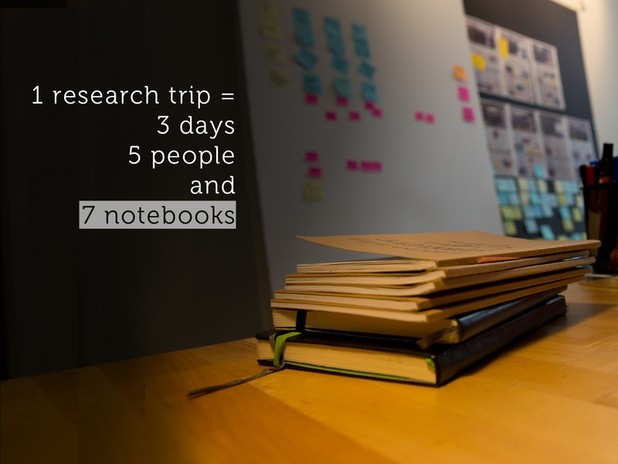March 07, 2013
Our IDEO.org team started looking at employment in America in the Rust Belt and ended up in the Sun Belt. Here’s an update on our human-centered design research from Houston, Texas.
As you know from our last blog post, our human-centered design research for the Rockefeller Foundation began in Cleveland, Ohio. The vacant Rockefeller Building in downtown Cleveland – a reminder of the days when John D. Rockefeller built his fortune during the city’s industrial heyday – made our research especially poignant for our client. And for myself, I grew up outside of Cleveland until I was twelve and my parents, like many engineers, followed the jobs as they shifted from manufacturing in the North to petrochemicals in the South.
After departing Cleveland, we conducted research in the San Francisco Bay Area and Los Angeles, before heading to Houston, Texas, aka, the place where I went to high school after my parents moved south from Cleveland.
When conducting human-centered design research, we like to look at the extremes. Houston -- and Texas more broadly -- are the jobs and urban growth capital of the United States. Where Cleveland is shrinking in terms of population, Texas is booming. The top three fastest growing cities in America are all in Texas. And Texas is ahead of its time in terms of demographics. The diversity and youth in Houston are a preview of what the rest of the country will look like in 40 years.
And yet, opportunity is distributed unevenly in Houston (as it is in the rest of America). We met a journalist working for a magazine called Houstonia. He was writing two quintessentially Houston stories, one about the gilded world of luxury swimming pools and the other on the vast underbelly of Houston brothels, a result of the city’s status as a hub for immigrants and human trafficking.
Meeting Houstonians
Our IDEO.org team spoke with many people at opposite ends of the employment spectrum, from young people struggling to break into a career to experienced workers languishing in long-term unemployment. The people we spoke with all had their employment issues, but they also showed a certain Houston hustle. Formal jobs may not have been a steady presence in their lives, but they were finding creative time fillers and new income streams.
Alex, 46, spent nine months looking for work. Fed up, he convinced a shooting range to pay for a food truck he could operate on the premises as a way of earning the money to buy it. It’s called Big Al’s Snack Shack and it’s at the intersection of Rifle Lane and Shooting Center Drive. (Only in Texas, right?)
Lani, 21, lives with her father in a far-flung suburb with no car. She’s been fired from a few jobs because she can’t stop herself from talking back. Building on her home-based hair styling business, she started attending and then dropped out of cosmetology school; her next goal is to go to culinary school. In the downtime before that program starts, she’s working as a club promoter.
Eddy, 29, hasn’t worked a full-time job since being laid off from a tech support call center that helped Best Buy customers install software on their new purchases. Now he works part-time under the table helping with his dad’s rental properties and bussing tables at a bar.
Amidst this wide range of pursuits, one common theme shared by Alex, Lani, and Eddy was that none of them were upfront with prospective employers about their side businesses. We know employers often seek initiative or an entrepreneurial spirit in prospective employees, and yet, they’re often stuck to evaluating people based only upon the formal criteria encapsulated in a flat resume.
Viewed in this light, the tension between jobseekers and employers became clear. For jobseekers, the longer time stretches between formal employment, the more they accumulate unconventional experiences that are hard to map relevantly to job roles (but which might actually be enormously relevant). Employers are looking for simple explanations for these gaps, but are missing the tools to interpret the messy reality that job seekers offer. Which had our IDEO.org team thinking: how might we help employers and job seekers translate unconventional experiences into skills?
We departed Houston to begin the synthesis phase back in San Francisco. As part of this next stage of the human-centered design process, we’ll be distilling what we learned in Cleveland, Houston, and other locations into insights like the one about how applicants’ unconventional skills often clash with formal hiring metrics used by employers.
Check back soon for updates from the land of synthesis and, in case you were worried, as a Texan hosting guests, I made sure the IDEO.org team had a plate full of Goode Co’s BBQ before we left Houston.








